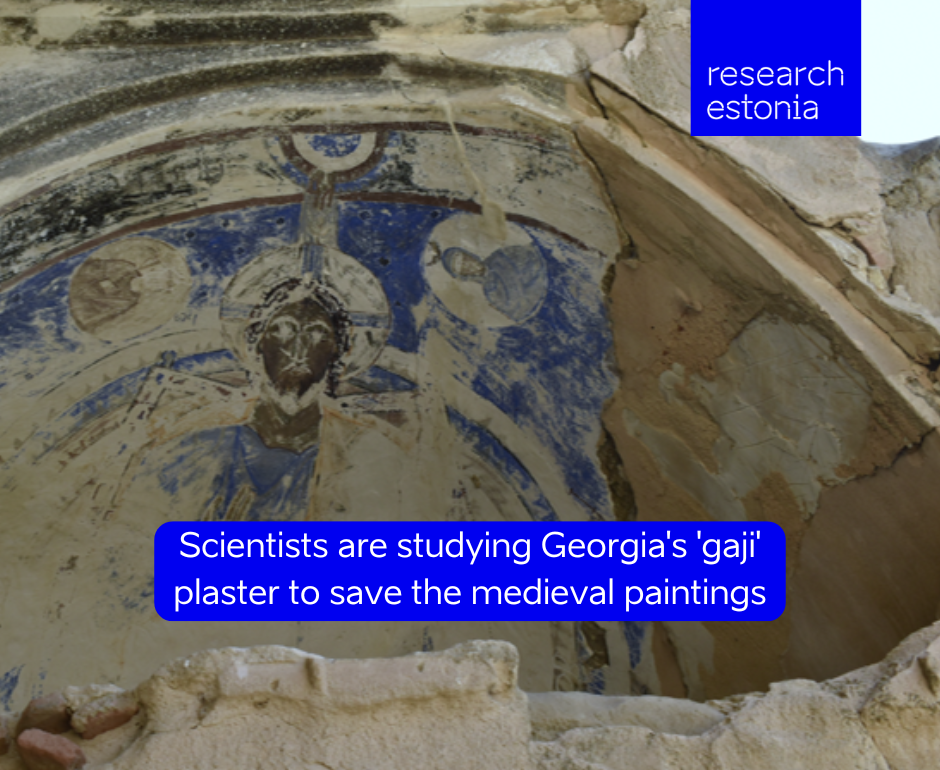Scientists are uncovering the secrets of the unique ‘gaji’ plaster used in Georgia’s David Gareji Monastery to develop new techniques for preserving its deteriorating medieval wall paintings. The findings may also provide valuable insights for safeguarding cultural heritage worldwide.
Georgia is rich in cultural heritage, and one of its most remarkable treasures is the David Gareji Monastery Complex, currently on UNESCO’s tentative World Heritage list. Founded in the 6th century by St. David, one of the Assyrian Fathers, the monastery became a symbol of spiritual and cultural resilience. Over centuries, more than 21 rock-cut monastic complexes were carved into the desert landscape near the Azerbaijan-Georgia border.
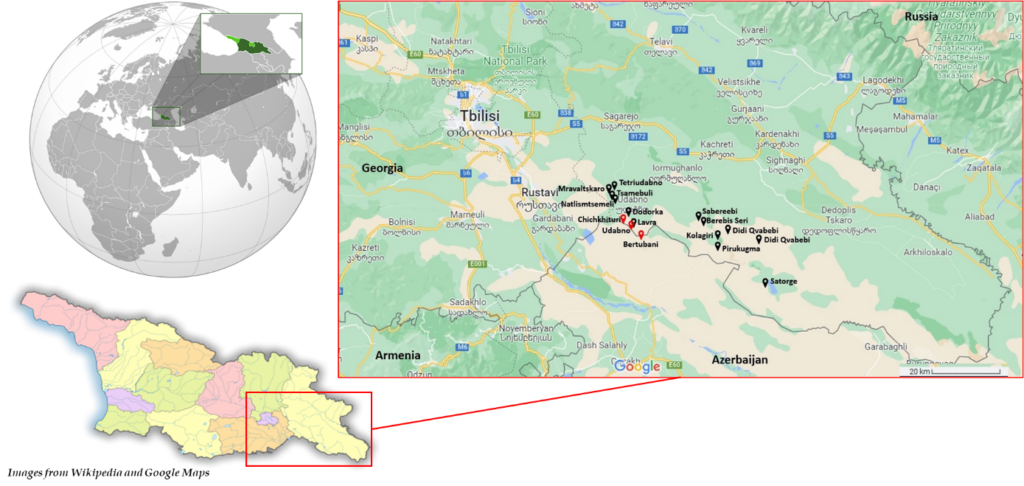
The churches of Gareji are adorned with stucco decorations and astonishing paintings dating from the 7th to 18th centuries. These distinct and culturally significant wall paintings, among the oldest in Georgia, are not only of art-historical value but also possess important technological significance. The paintings were executed on a unique local plaster material known as ‘gaji,’ composed of gypsum and clay.
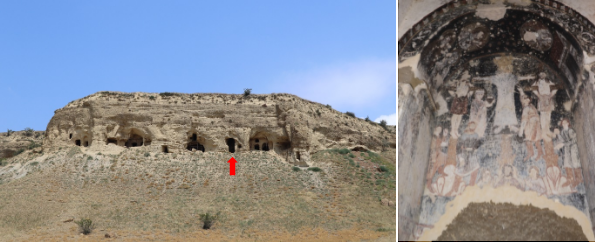

Time is taking its toll on the technologically sensitive wall paintings of abandoned rock-cut churches in Georgia. This alarming situation was internationally highlighted in 2018 when Europa Nostra included the David Gareji complex in its list of Europe’s 7 Most Endangered heritage sites. Rescuing paintings, however, requires the development of new methodologies, as attempts to preserve them for future generations might otherwise lead to their destruction.

As a conservator, I am deeply committed to extending the life of the David Gareji paintings. However, this task is incredibly challenging, yet profoundly rewarding. Beyond the daunting task of scaling abandoned cliffs teeming with snakes and lizards, and the constant risk of cliff collapse, lies a significant challenge of understanding of the historic ‘gaji’ material.
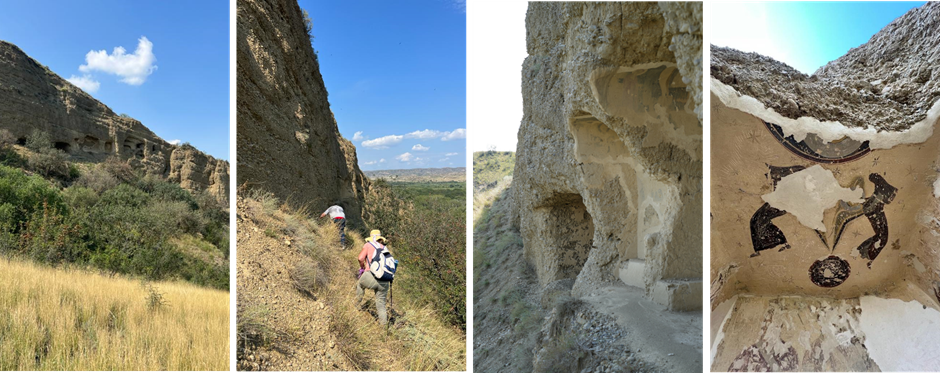
Researchers have not thoroughly or scientifically studied the chemical and physical properties of gaji, particularly from medieval times. Consequently, preservation techniques, including suitable repair materials and application methods, have yet to be fully developed.
Addressing these challenges is crucial not only for preserving these artworks but also for advancing conservation practices. My PhD research aims to scientifically investigate the historic gaji plasters from the David Gareji Monastery Complex and explore the potential of modern gaji as a conservation material for stabilising the wall paintings.
This conservation study takes an interdisciplinary approach, collaborating closely with international experts, such as chemists, geologists, materials scientists, conservators, and art historians. This collaboration allows for thorough scientific investigations, data collection, and proper interpretation of results.
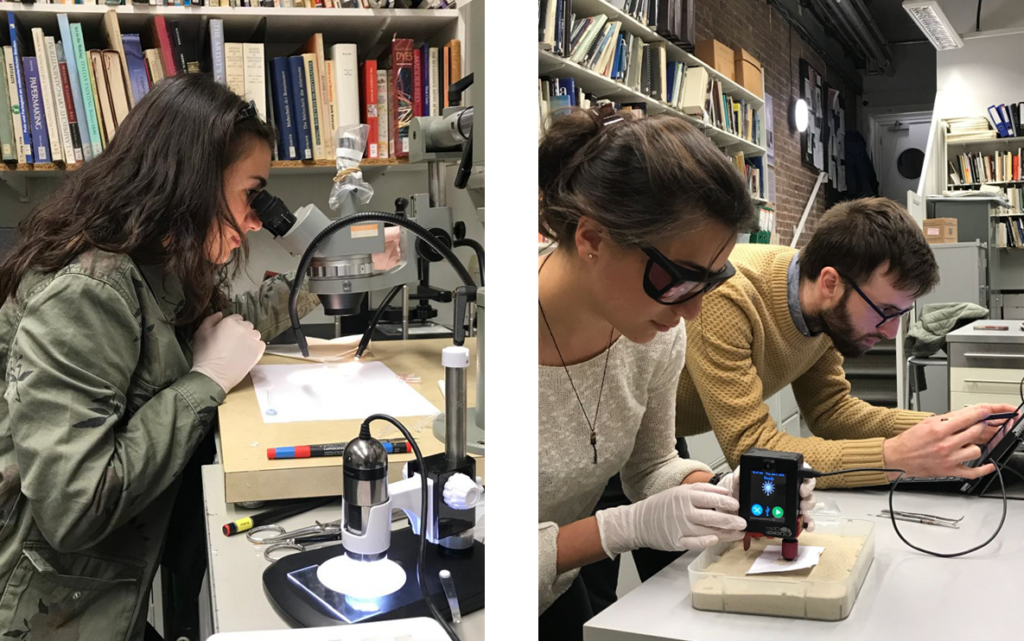
So far, based on the results of mineralogical and chemical analyses, we have uncovered a vast array of compositions and properties of historic gaji plasters, varying according to their execution date and geographic location. Given the complexity of the site, it is not surprising that the research results were equally intricate. This knowledge enhances our understanding of how artisans historically produced and applied gaji plaster, sheds light on mechanisms of deterioration, and guides the development of compatible and stable conservation materials.
We develop new conservation materials by investigating the composition of raw gaji, sourced from modern quarries. To do that, we are firing raw gaji in a temperature-controlled kiln, similar to those used for ceramics and vary temperatures to study their effect on the properties of the gaji plaster, particularly the role of clays and calcium sulfate hydrations. These tests help to assess the potential of contemporary gaji sources and production methods for various conservation applications, including repair plasters and grouts.
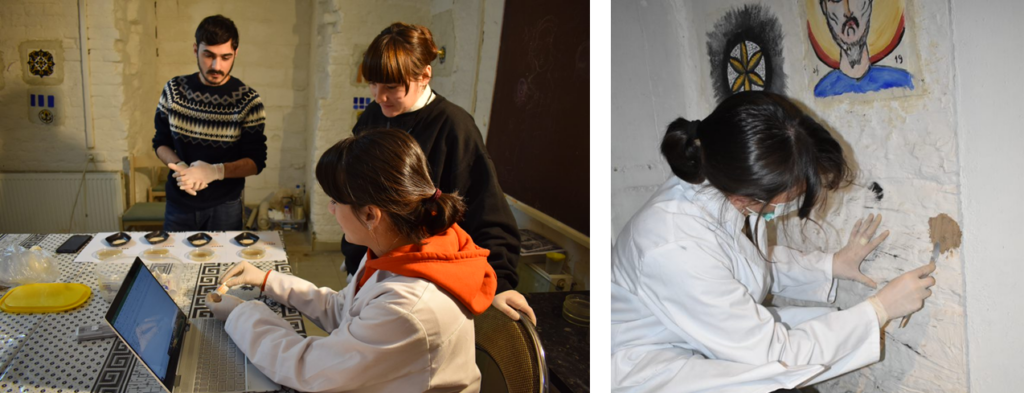
Based on these results, we develop conservation formulation, and assess their suitability through lab-based testing to evaluate their working properties and long-term characteristics. We will then test and assess conservation materials and methods in situ using site-adapted material testing techniques.
This knowledge will be crucial in preventing the paintings from detaching and falling off the cliffs. By creating materials that can effectively stabilise and secure these fragile surfaces, we can extend their lifespan, ensuring that future generations can continue to experience these cultural treasures.
Developing new techniques and conservation materials specifically tailored to the unique composition of the David Gareji wall paintings is vital, not only for preserving this iconic site but also for safeguarding similar artworks and plasters across the Middle East, Central Asia, and the South Caucasus. Our study of ‘gaji’ plaster, along with the development of compatible conservation solutions could set a new standard in the field of cultural heritage conservation.
Author of this article is Mariam Sagaradze from the Estonian Academy of Arts. Editor Jaan-Juhan Oidermaa.
Article written for the contest “Science in 3 minutes” organised by Estonian Academy of Sciences and The Estonian Young Academy of Sciences (EYAS). Main sponsor of the competition is Inclusive Financial Technology Foundation.
If this glimpse into the Estonian Academy of Arts has painted a vivid picture for you, don’t brush it off just yet – sketch your way over to our next article for more creative inspiration! Read more about The Wool Woman: EKA PhD Student Katrin Kabun is on a Mission to Transform Interior Design!
 Back
Back